Don't Make These Grocery Shopping Mistakes Right Now, Warn Experts
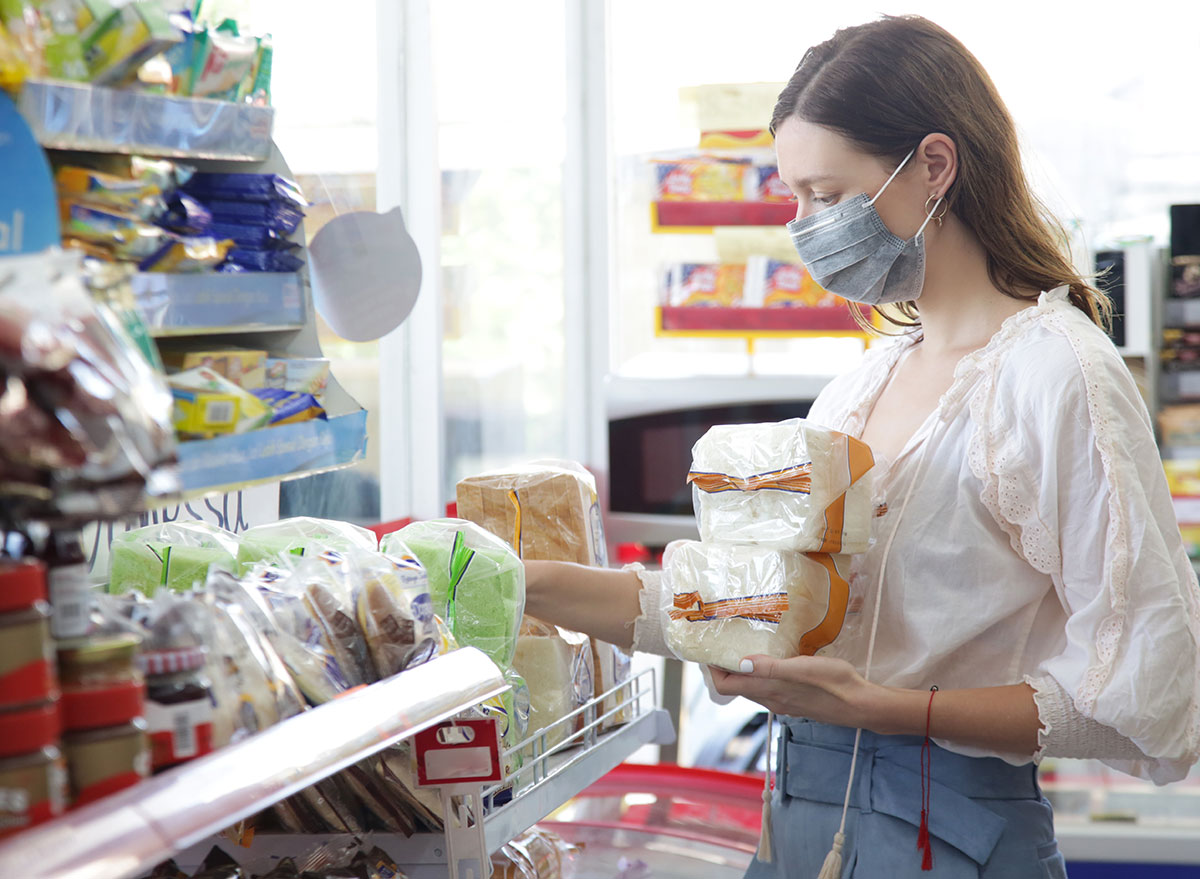
By now we've all learned a lot about safely shopping for groceries during the era of COVID-19. For instance, we now know it's unlikely we'll contract the virus from surfaces. Also, we needn't necessarily wear gloves (simple hand-washing works better), we don't necessarily have to wipe down our shopping carts when we enter the store, and when we arrive at home, the CDC now says it's not mandatory for us to obsessively disinfect every square inch of our new foodstuffs in an effort to wash away potentially deadly coronavirus particles.
But given everything we know now, the grocery store remains one of the riskiest (of not the riskiest) places in public you routinely visit—especially as COVID-19 cases are currently overwhelming many U.S. cities. "The data from England shows that the most frequent location where people had visited or worked prior to testing positive was a supermarket," Leslie M. Kantor, Ph.D, MPH, chair of the department of urban-global public health at the Rutgers School of Public Health, explained to the education site Futurity. "Some areas of the United States, like New Mexico, are acknowledging that grocery stores and other retail locations are high-risk for coronavirus exposure. Data from around the U.S. also clearly links COVID-19 exposure to grocery stores."
That's why, as holiday season kicks into high gear, we've compiled just a few of the biggest no-nos you definitely shouldn't be doing when you hit up your nearest Wegman's, Whole Foods, or Bi-Lo—or any other neighborhood grocery store you love to frequent. Some of these you likely know, others may come as a surprise. But read on to see what they are, and if Walmart's your store of preference, make sure you're up to speed on the 8 Ways to Shop Safely at Walmart Right Now.
You're Taking Your Time
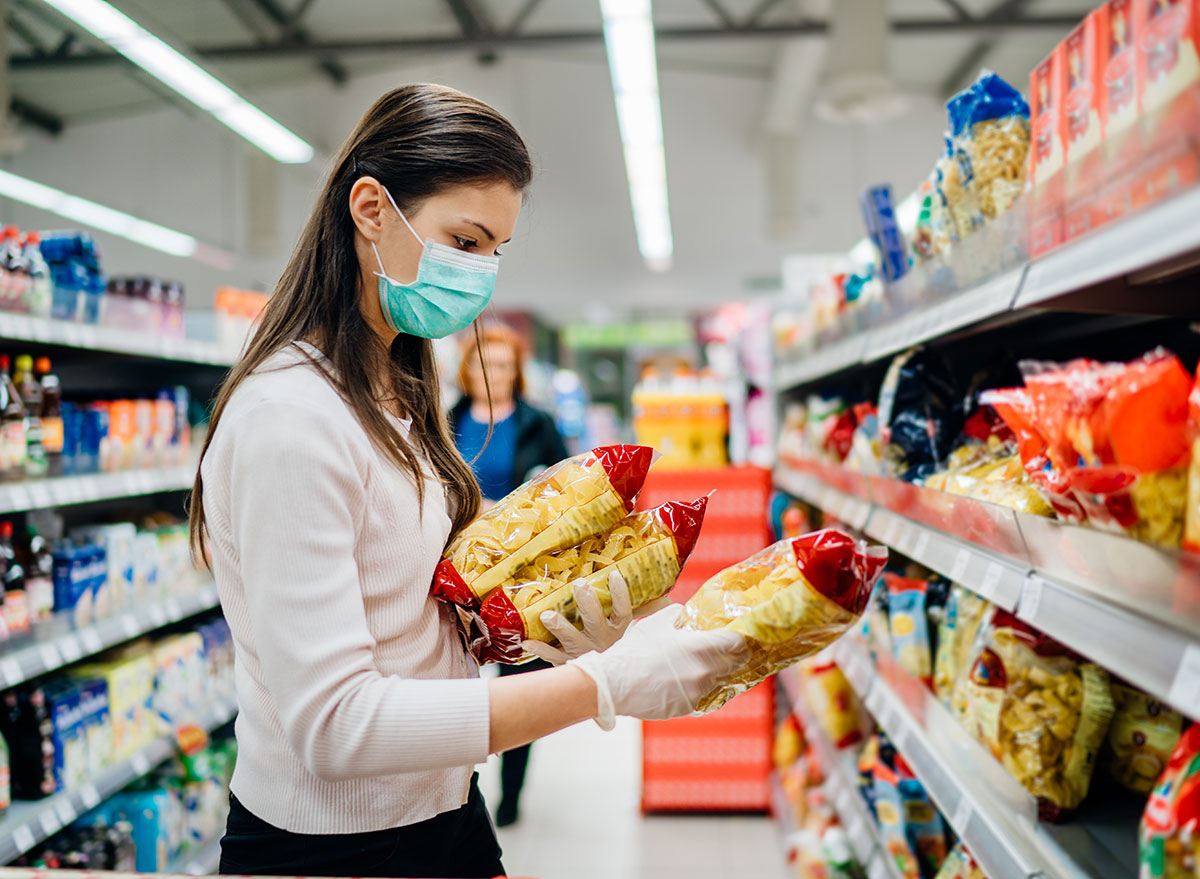
Linsey Marr, Ph.D, an aerosol scientist, professor of civil and environmental engineering, and a top expert on airborne disease transmission at Virginia Tech University, told The New York Times that shoppers should consider a 30-minute time limit when visiting the grocery store. "A half-hour seems like about the right time, where hopefully you can get something done, but you're not putting yourself in a higher risk situation," she said.
It's a simple fact: The longer you're exposed to the airborne particles in an indoor environment, the more you're likely is you become infected. According to the CDC, if you're within six feet of an infected person for 15 minutes or more, you can become infected.
Also, it's important to shop with not only purpose but also focus—and that means no headphones. "The last thing you want to do is get so caught up in the music that you become distracted and overlook adequate social distancing measures or proper hygiene practices," says Nesochi Okeke-Igbokwe, M.D., M.S., internist and health expert. "Don't let your guard down while out grocery shopping. The goal is to get in and out of the store as quickly as possible with minimal exposure to the germs of others. You must remain focused at all times."
You're Shopping at Peak Shopping Hours
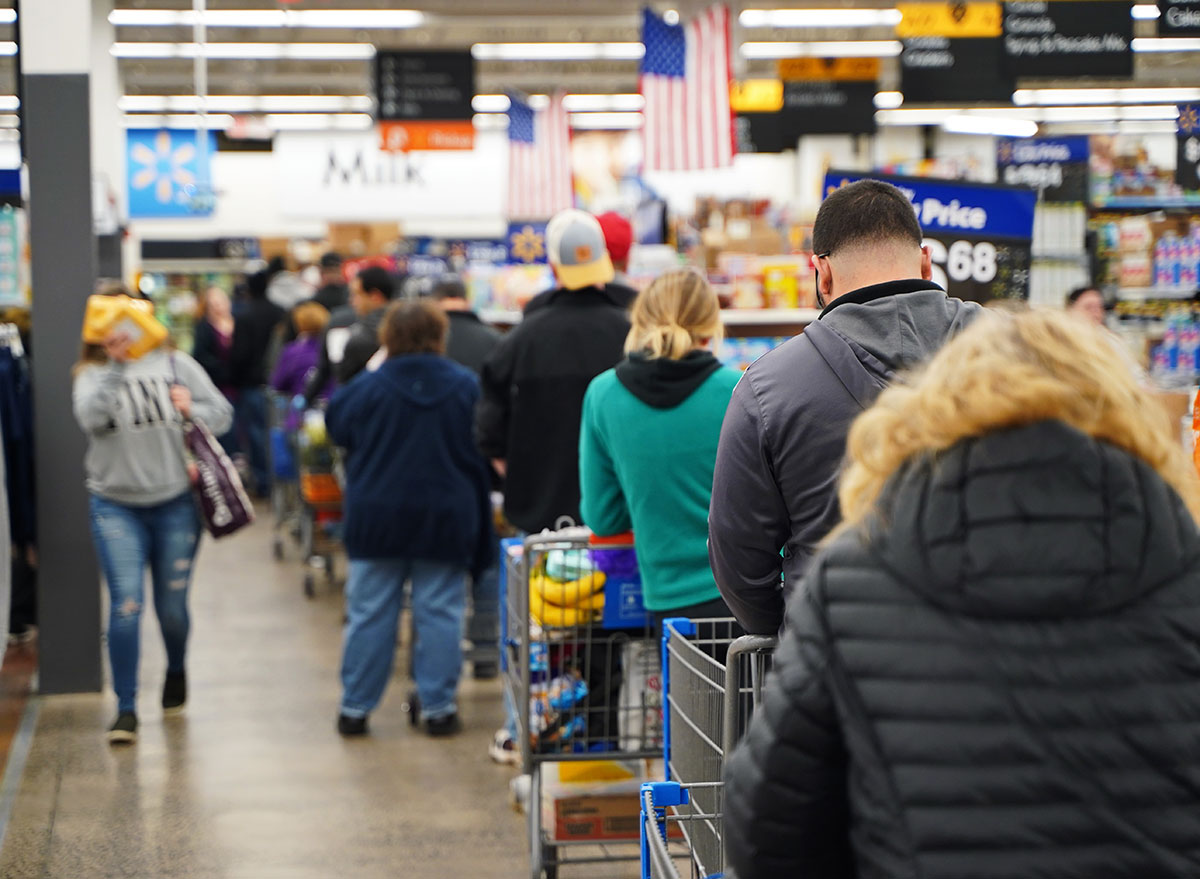
"When you do have to visit [the grocery store] in person," write the experts at the CDC, "Go during hours when fewer people will be there (for example, early morning or late night)."
For even greater specificity on when you should and shouldn't go grocery shopping, you can reference the data that Google Maps published in advance of the Thanksgiving holiday. According to their data, the least busy time to visit a grocery store is on Mondays at 8am, while the single most busy time is on Saturdays between 12pm and 3pm.
You're an Older Person Who Is Entering the Store
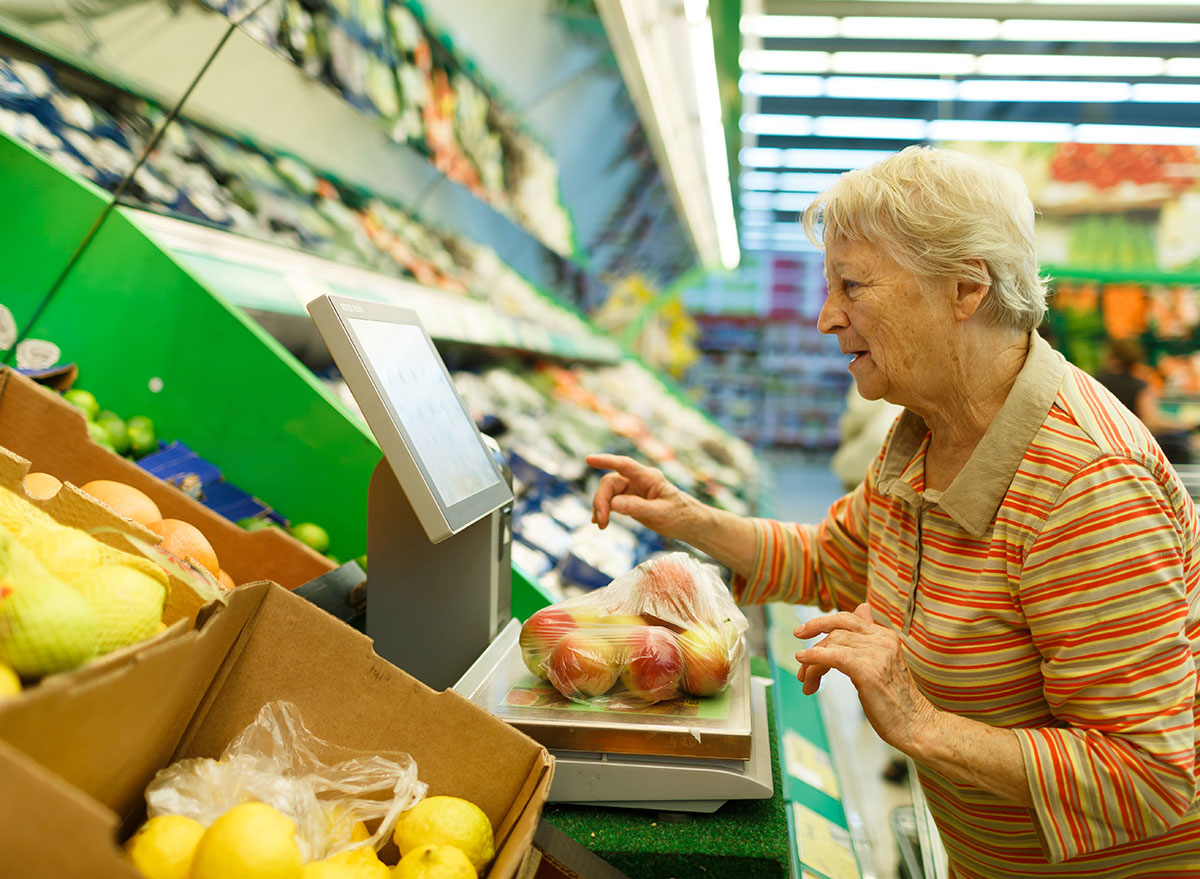
Rutgers' Dr. Kantor says that if you're an older American, you need to continue using curbside pickup or delivery options as the virus continues to spread—or you need to have a younger person do your shopping for you. If you have a loved one who is older and wants to continue grocery shopping, she offers some advice for trying to convince them otherwise.
"It's not easy to convince someone to change their life-long habits, [so] emphasize that this change isn't forever," she told Futurity. "If we can get people through the next few months to the availability of effective vaccines, older adults will once again be able to do most of the activities they wish to do. Substitute safer activities during the coming months. For example, is there a park where you can take a walk twice a week rather than going to the store? A good reminder is that outside is safer than inside."
You're Wearing an Old Face Mask You Found Under Your Car Seat
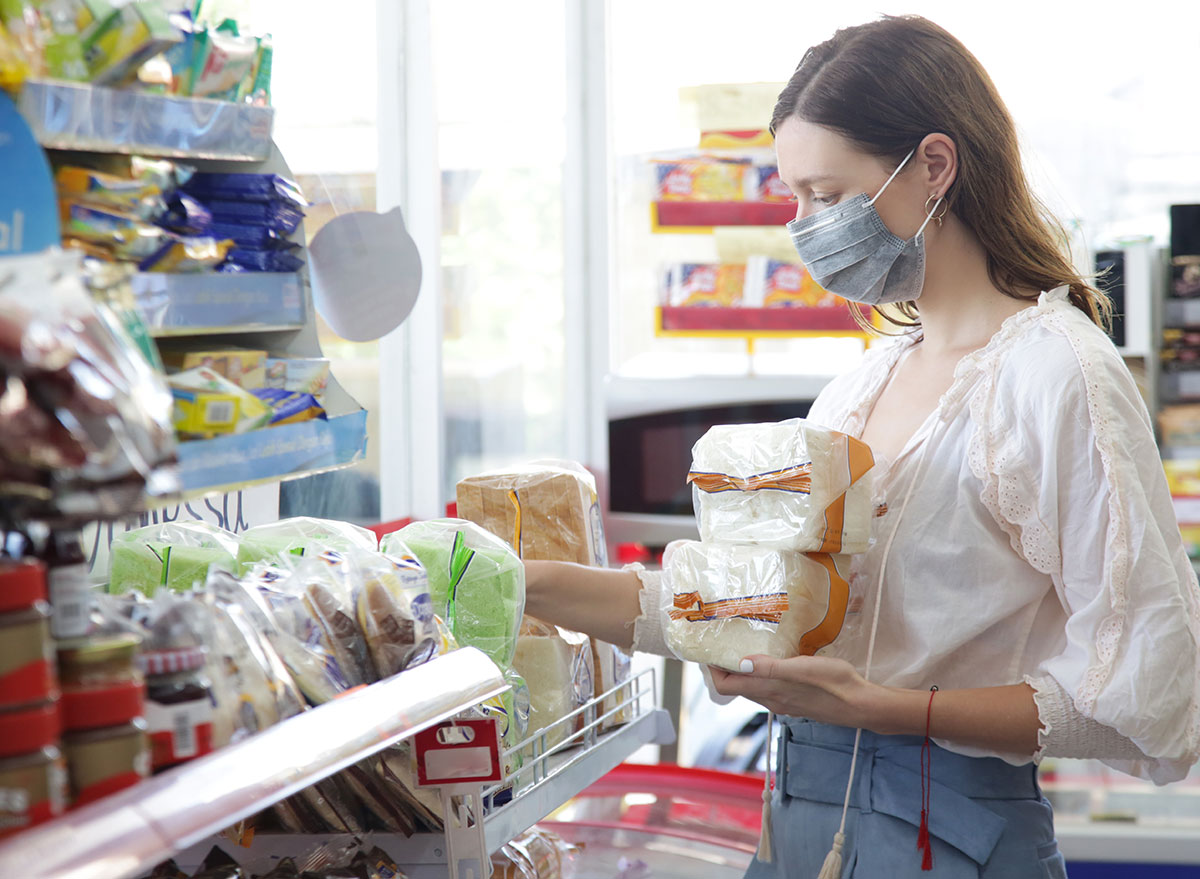
Do you remember when wearing a face mask felt like a novelty? Fast forward to today, and you've probably got masks all over your home—stuffed between your couch cushions, collecting dust by your desk, lying in a basket by your front door right next to the umbrellas, tote bags, and dog leashes.
If you're going to the grocery store, don't just grab the nearest one you can find that's wrinkled and hasn't been washed in ages. Remember: a face mask only works if it fits properly, and snugly covers both your nose and your mouth. And even if it fits perfectly, there's not a 100 percent guarantee that it will keep you safe. "Don't count on your mask to be a total blockade," Michael Osterholm, Ph.D, MPH, a member of Joe Biden's COVID-19 advisory group, told The New York Times. "The time of exposure is really important." And for more advice you can use right now, make sure you're aware of The Worst Way COVID-19 Stress Affects Your Health.








